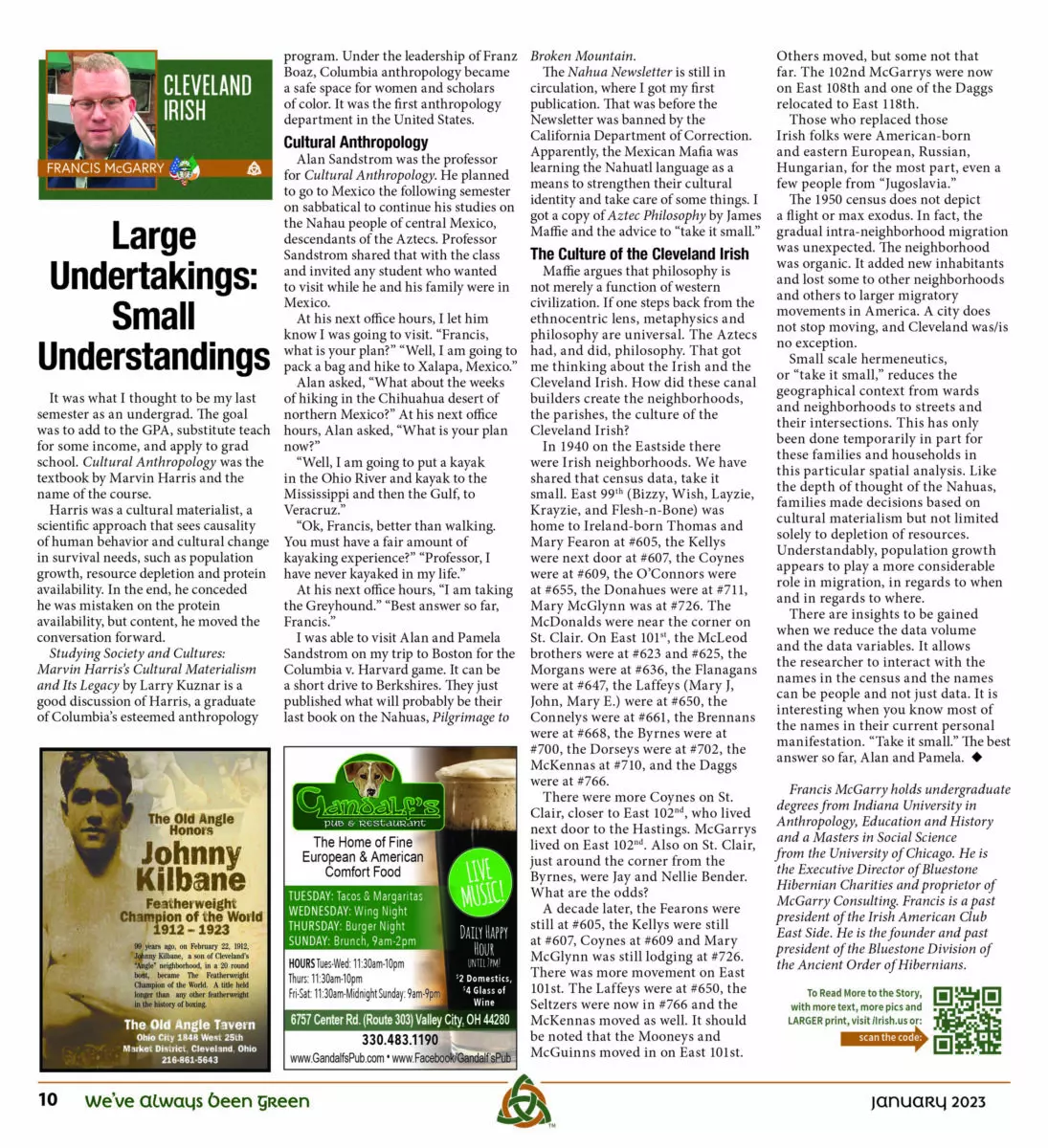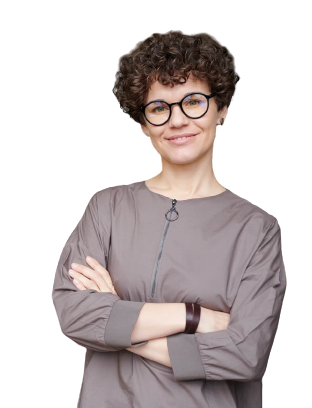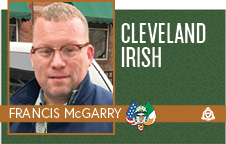
Large Undertakings: Small Understandings
By Francis McGarry
It was what I thought to be my last semester as an undergrad.
The goal was to add to the GPA, substitute teach for some income, and apply to grad school. Cultural Anthropology was the textbook by Marvin Harris and the name of the course.
Harris was a cultural materialist, a scientific approach that sees causality of human behavior and cultural change in survival needs, such as population growth, resource depletion and protein availability. In the end, he conceded he was mistaken on the protein availability, but content, he moved the conversation forward.
Studying Society and Cultures: Marvin Harris’s Cultural Materialism and Its Legacy by Larry Kuznar is a good discussion of Harris, a graduate of Columbia’s esteemed anthropology program. Under the leadership of Franz Boaz, Columbia anthropology became a safe space for women and scholars of color. It was the first anthropology department in the United States.
Cultural Anthropology
Alan Sandstrom was the professor for Cultural Anthropology. He planned to go to Mexico the following semester on sabbatical to continue his studies on the Nahau people of central Mexico, descendants of the Aztecs. Professor Sandstrom shared that with the class and invited any student who wanted to visit while he and his family were in Mexico.
At his next office hours, I let him know I was going to visit. “Francis, what is your plan?” “Well, I am going to pack a bag and hike to Xalapa, Mexico.”
Alan asked, “What about the weeks of hiking in the Chihuahuan desert of northern Mexico?” At his next office hours, Alan asked, “What is your plan now?”
“Well, I am going to put a kayak in the Ohio River and kayak to the Mississippi and then the Gulf, to Veracruz.”
“Ok, Francis, better than walking. You must have a fair amount of kayaking experience?”
“Professor, I have never kayaked in my life.”
At his next office hours, “I am taking the Greyhound.”
“Best answer so far, Francis.”
I was able to visit Alan and Pamela Sandstrom on my trip to Boston for the Columbia v. Harvard game. It can be a short drive to Berkshires. They just published what will probably be their last book on the Nahuas, Pilgrimage to Broken Mountain.
The Nahua Newsletter is still in circulation, where I got my first publication. That was before the Newsletter was banned by the California Department of Correction. Apparently, the Mexican Mafia was learning the Nahuatl language as a means to strengthen their cultural identity and take care of some things. I got a copy of Aztec Philosophy by James Maffie and the advice to “take it small.”
The Culture of the Cleveland Irish
Maffie argues that philosophy is not merely a function of western civilization. If one steps back from the ethnocentric lens, metaphysics and philosophy are universal. The Aztecs had, and did, philosophy. That got me thinking about the Irish and the Cleveland Irish. How did these canal builders create the neighborhoods, the parishes, the culture of the Cleveland Irish?
In 1940 on the Eastside there were Irish neighborhoods. We have shared that census data, take it small. East 99th (Bizzy, Wish, Layzie, Krayzie, and Flesh-n-Bone) was home to Ireland-born Thomas and Mary Fearon at #605, the Kellys were next door at #607, the Coynes were at #609, the O’Connors were at #655, the Donahues were at #711, Mary McGlynn was at #726. The McDonalds were near the corner on St. Clair. On East 101st, the McLeod brothers were at #623 and #625, the Morgans were at #636, the Flanagans were at #647, the Laffeys (Mary J, John, Mary E.) were at #650, the Connelys were at #661, the Brennans were at #668, the Byrnes were at #700, the Dorseys were at #702, the McKennas at #710, and the Daggs were at #766.
There were more Coynes on St. Clair, closer to East 102nd, who lived next door to the Hastings. McGarrys lived on East 102nd. Also on St. Clair, just around the corner from the Byrnes, were Jay and Nellie Bender. What are the odds?
A decade later, the Fearons were still at #605, the Kellys were still at #607, Coynes at #609 and Mary McGlynn was still lodging at #726. There was more movement on East 101st. The Laffeys were at #650, the Seltzers were now in #766 and the McKennas moved as well. It should be noted that the Mooneys and McGuinns moved in on East 101st. Others moved, but some not that far. The 102nd McGarrys were now on East 108th and one of the Daggs relocated to East 118th.
Those who replaced those Irish folks were American-born and eastern European, Russian, Hungarian, for the most part, even a few people from “Jugoslavia.”
The 1950 census does not depict a flight or max exodus. In fact, the gradual intraneighborhood migration was unexpected. The neighborhood was organic. It added new inhabitants and lost some to other neighborhoods and others to larger migraitory movements in America. A city does not stop moving, and Cleveland was/is no exception.
Small scale hermeneutics, or “take it small,” reduces the geographical context from wards and neighborhoods to streets and their intersections. This has only been done temporarily in part for these families and households in this particular spatial analysis. Like the depth of thought of the Nahuas, families made decisions based on cultural materialism but not limited solely to depletion of resources. Understandably, population growth appears to play a more considerable role in migration, in regards to when and in regards to where.
There are insights to be gained when we reduce the data volume and the data variables. It allows the researcher to interact with the names in the census and the names can be people and not just data. It is interesting when you know most of the names in their current personal manifestation. “Take it small.” The best answer so far, Alan and Pamela.
*Francis McGarry holds undergraduate degrees from Indiana University in Anthropology, Education and History and a Masters in Social Science from the University of Chicago. He is the Executive Director of Bluestone Hibernian Charities and proprietor of McGarry Consulting. Francis is a past president of the Irish American Club East Side. He is the founder and past president of the Bluestone Division of the Ancient Order of Hibernians.
